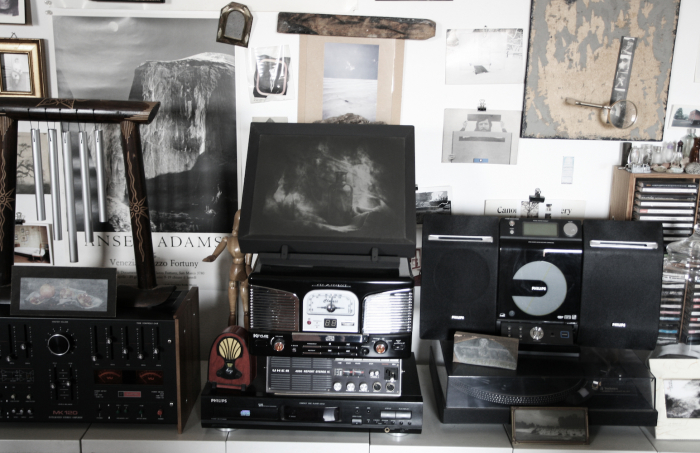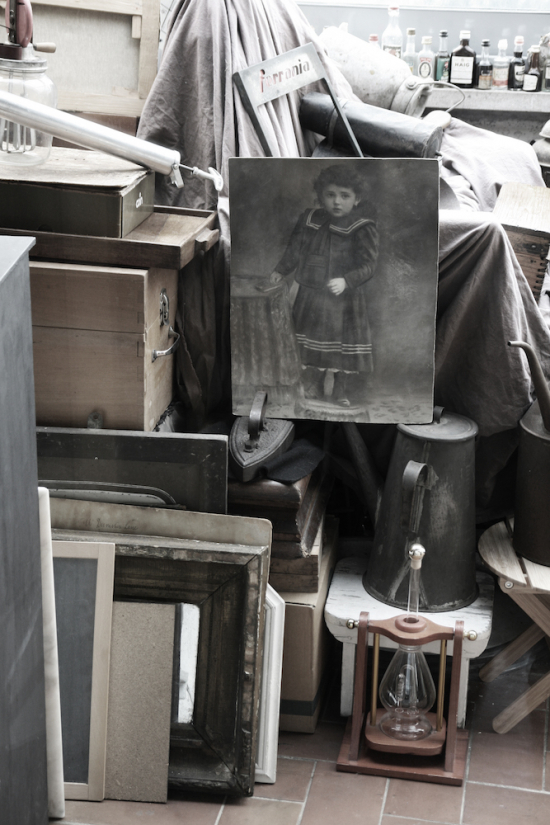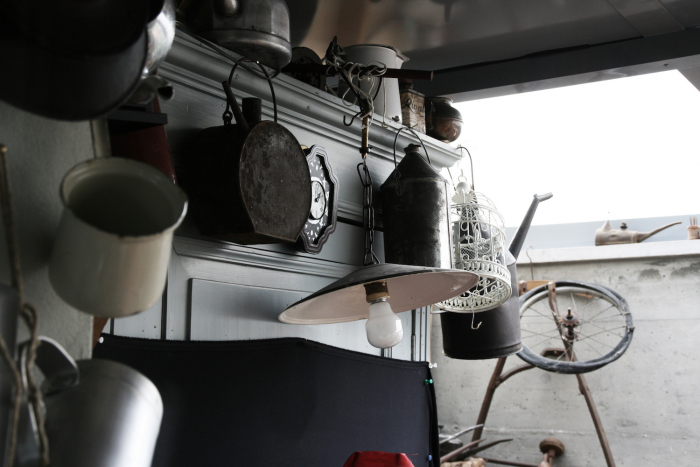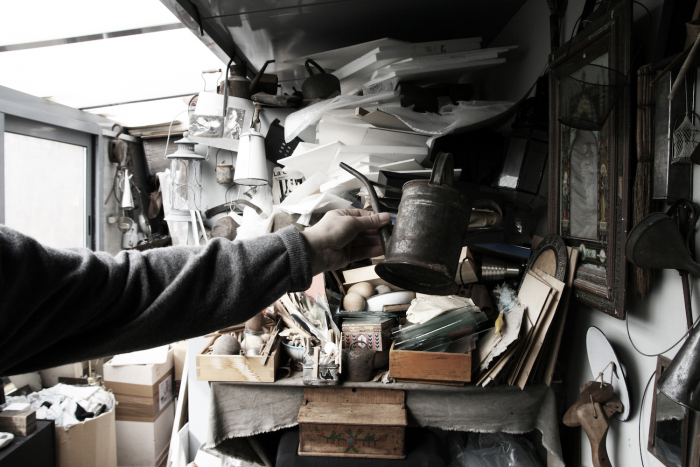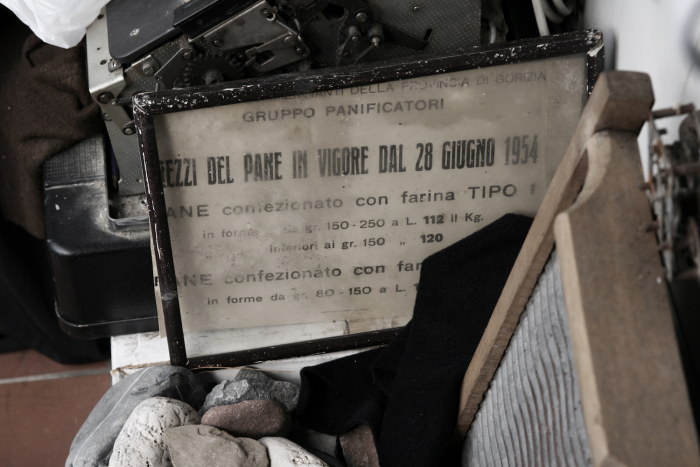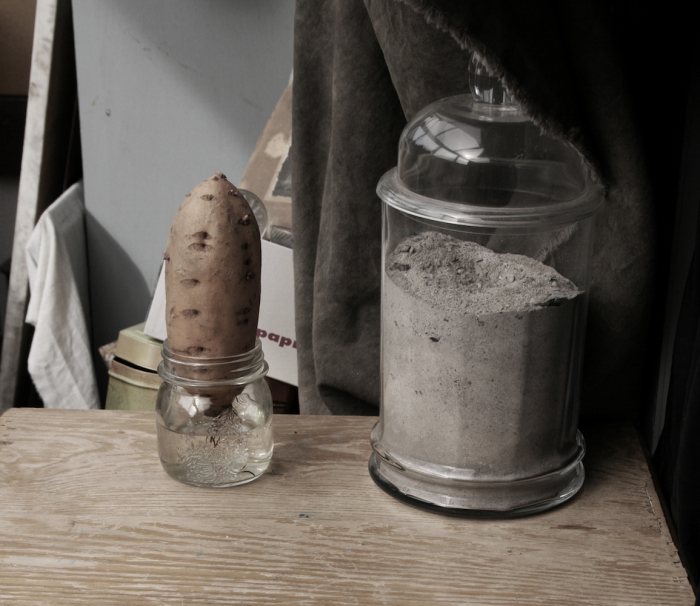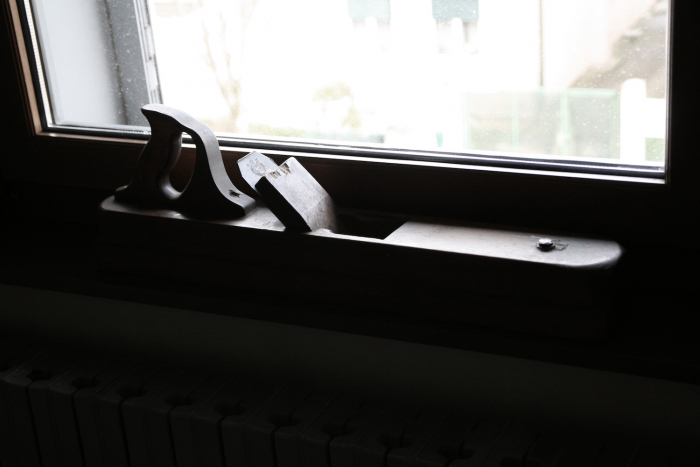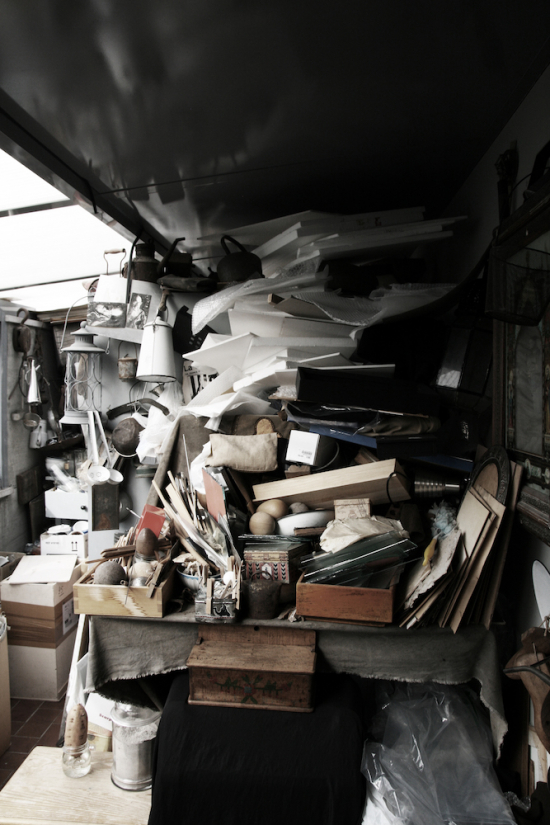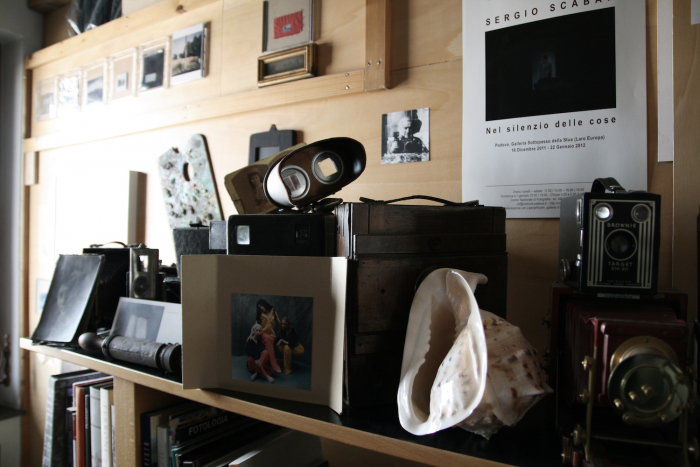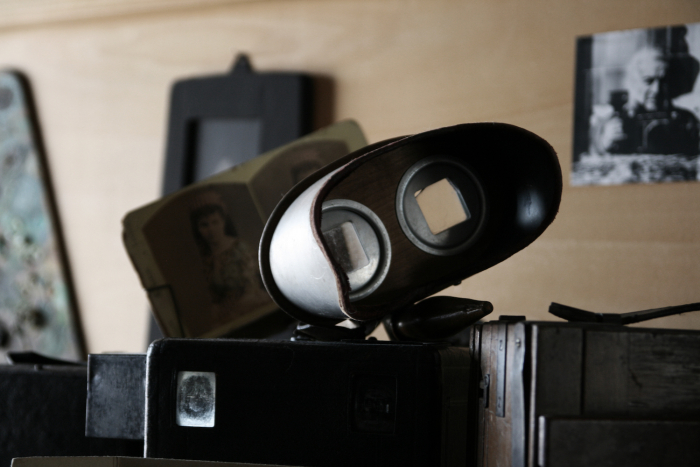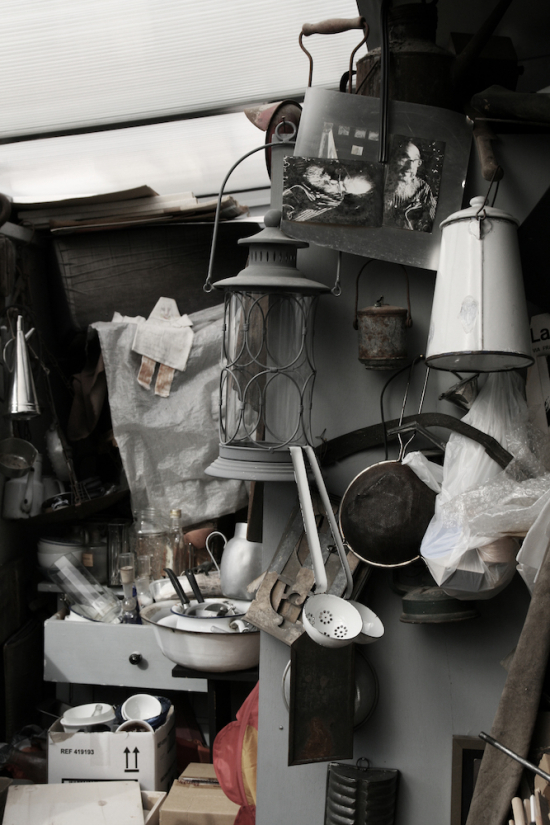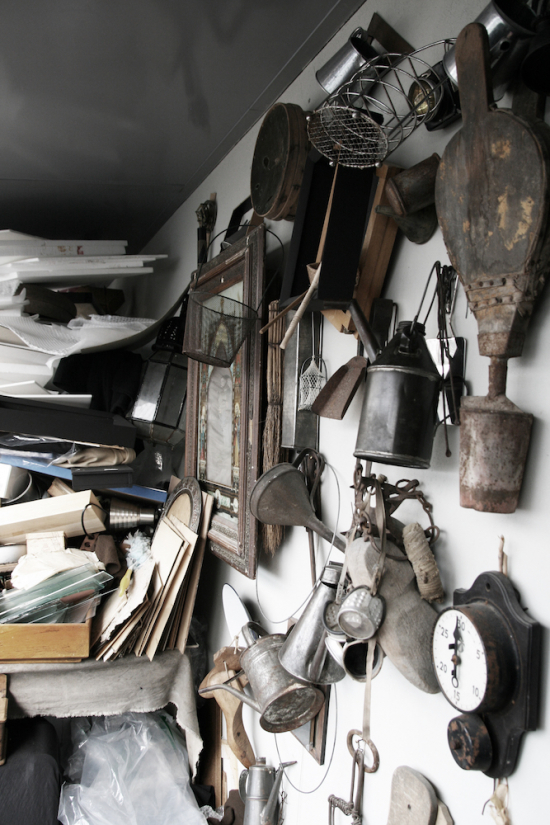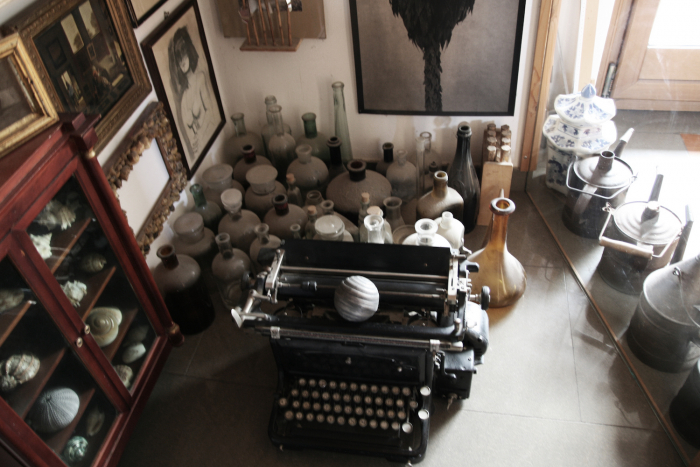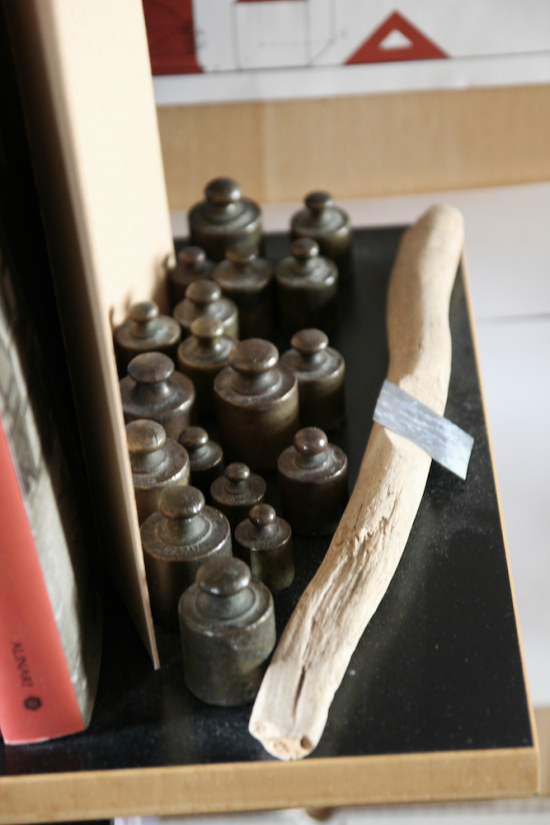A small house in Ronchi dei Legionari in the province of Gorizia, cars calmly go by and never stop, like mine would if I didn’t have an appointment. I park, I get closer and I immediately notice the surname on the doorbell written in white on a black background, a small detail announcing a nice story. MISTER SCABAR and his wife open the door.
I have just finished reading Pamuk’s The Museum of Innocence and I am full of his words and folly, absorbed in cataloguing the memories of my existence and the existence of other people, when I enter a home which is a museum, a library, a chest of treasures and of a whole life. Objects, photographs and books compete for space, two television sets in the living room – one next to the other – equitably share the centre of the room, even if one of them is working and the other isn’t anymore. I would like to stop and touch and photograph every object or composition of objects, some of which are deliberately covered in dust; I would like to open the glass doors of the closets filled with art and photography books and leaf through them one by one… and I start wondering what treasures and what surprises may hide behind the closed doors.
SERGIO SCABAR, born in 1946 in Ronchi dei Legionari, is a self-taught photographer for passion: “I have privately learnt to photograph and print on my own, dealing only with myself, my passion and my will”. He started to get interested in photography going to exhibitions. He has always been fond of visual arts, an habitué of painting, sculpture and cinema exhibitions, a lover of minimal but also classical music. He has never worked as a photographer, he has always devoted himself to photography considering it as a free passion of his, developing it as a personal research in the spare time left by his work: “I have never wanted to work as a photographer, I wanted to be free, to do research, this is why I don’t photograph people, they are never satisfied and I need to tell them how to pose. To bottles I do not have to say anything: I think, I move them, I observe them”.
He is completely anti-technological and all his pictures are on film that he develops in a darkroom. He admits that the lack of a digital cataloguing of his work may be a problem: “I am craftsmanship taken to the extreme level, I do not have a professional studio, I mainly work with natural light, sometimes with a candle or a light bulb, I have a small altar where I create my compositions and shoot. I do not even delegate the frame, I am not a carpenter but I take old frames and modify them, I like them uneven, round, cut, broken, unique… this gives me energy, and I like it… I photograph only the things I own, not those that are lent to me but those that are mine. I go to flea markets and when I come across an object that instils me with energy I buy it and put it in my workshop, where I have all I need to create my compositions, like a painter. I create compositions of real things, which have an atmosphere. I need to work on reality and I only create one-of-a-kinds, no picture of mine is the same as another, I use a peculiar print, I use acids according to my personal method, like a barman who sticks to the recipe for his own special cocktail whose ingredients are unknown to everybody but him, so the acid in my print moves to the surface and sweetly melts creating the decreasing light, this is why I call it an alchemic print. I always work with a low tone, a tone that I use even in the dark frame. Darkness forces you to linger, and the more you linger the more you get into the work, as it happens when you enter a cinema which is completely dark and little by little your eyes get used to the darkness and start to read. All my works are handmade, unique. Uniqueness is essential to me”. His photographs are always small-sized – 30 x 40 centimetres at the most: “I am fascinated by small things. I want people to get closer, I am not interested in eye-catching things, but in careful reflection”. The main inspiration for his work is clearly Morandi: “For his attitude, his poetics, his simplicity” SCABAR says, seriously. Space, light, atmosphere… it’s all important to him inside and outside photography, even the exposure or the arrangement of his works on the walls is fundamental for the message he wants to convey, the atmosphere he wants to create: “Images themselves must not be arranged like rows of soldiers, they should have their own energy… Every picture is different to me, I cannot standardise them, this would mean cataloguing, which, although it can be very interesting – as in the case of the American photographer Joel Meyerowitz,* who photographed all Morandi’s objects using his same wall and creating a wonderful cataloguing of all Morandi’s objects estranged from Morandi himself – is nevertheless cold, and I don’t like coldness, I want my works to be warm. They are a fusion between past and present, the past is always there, this is why my pictures are timeless and I love to think that my work affects the person that will look at the picture. I find it important to know the past, to have a starting point from which to create one’s own uniqueness through personalization. With respect to my work, for example, many have photographed objects before me, I haven’t invented anything, there is nothing left to invent, but with love and passion you can gradually find your own voice. It’s wonderful to give riches, to contribute to photography, to follow the example of the greatest masters, of the most talented ones, and look for my voice. I continue to see everything, I go to exhibitions, I get books and dvds, because I want to know, I need to know, I can’t help it. It’s something that comes from inside of me, the passion, the determination to continue to do what I want as I like it, to follow my impulse, my instinct. I have been working with this technique for twenty years and I still need to experiment, always. Only death is the end”.
So I get out of his house museum, which contains all his life devoted to photography and to the study of all arts, and I understand why I was amazed when I got in: there weren’t simple shelves full of books, walls full of frames, floors full of glass vases or pottery in various shapes and colours, but a life devoted to an irrepressible passion. You don’t see every day lettuce leaves become Renaissance draperies or bottle whisper silence. It’s quite unusual that the framed and exhibited works give the impression of a steady dialogue that tells emotions and ideas. A small place where you can meet art, a place that should be open to the public, and be included in Kemal’s list of places that are worth visiting.
If you want to see Scabar’s collection without going to his home/study or to a show, there are a couple of publications* that are not easy to find, or his website, but the truth is that his work, so far from any kind of technology, can be truly appreciated only in real life.
* EXHIBITION MORANDI’S OBJECTS, Spazio Damiani, Bologna, October 23, 2015 – February 1, 2016, and the catalogue: MORANDI’S OBJECTS, Joel Meyerowitz, Damiani.
* SILENZIO DI LUCE, Sergio Scabar, Punto Marte Editore, 2008.


